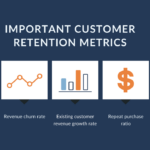The start-up world is ever-changing. As an entrepreneur, looking at the different trends and stats before making your next move can give you an advantage over your competitors and help you focus on immediate and long-term goals.
Specifically, it is not just about following trends but having insight about the world implications of these trends three to five years down the road. This is because it will take a few years to establish yourself in that area and so you need to predict where you need to be then instead of where you need to be now.
Most Popular Start-Up Categories
In order to understand the different trends when it comes to successful start-ups, Kempler Industries analyzed the top 200 around the world and segmented them into 19 categories based on what they allow us to accomplish. Here are the top 5:
1. Find: 21% of these start-ups focus on helping users find things. Content, activities, people, places to go, to rent, etc.
2. Buy: 11% offer some type of commerce platform.
3. Organize: 9% help users optimize processes.
4. Read: 7% offer users a variety of news and special interest sites.
5. Create: 7% help users build/create digital assets by designing/coding.
3 of the Biggest Trends in the Start-Up World:
1. Disruptive Innovation/Technology
This term refers to any innovation that makes a huge impact in an industry. It usually helps smaller companies with fewer resources compete and even beat industry giants. Airbnb is one of the best examples here. Founded in 2008, it is bringing in more revenue than global hotel chains that have been around for a lot longer. We can think of it as making things easier for the end user by cutting out the middle man which at the same time cuts down costs. You might not disrupt entire industries, but by using disruptive technology, you can create new markets and start all sorts of different businesses.
2. Remote Teams
Remote work has become extremely popular. In almost every single industry, the percentage of people in the United States who reported working from home has increased dramatically over the past few years. Management, business, financial services, sales, education, etc. you name it. A lot of start-ups are leveraging the power of having a remote team; some are even going 100% virtual. What is not to like when you can hire skilled workers from all around the world and be as or even more productive than teams on site. 30% of workers accomplish more in less time, 23% are willing to work longer hours and 52% are less likely to take time off, even when they are sick.
3. Automation
Artificial intelligence and chat bots are coming stronger than ever, and 87% of small business owners believe that this will have a positive impact on their business over the next few years. Customer service/support is one of the areas that will be impacted the most. When you can deliver helpful, personalized, 24/7 assistance using a bot, why not do it?
These are just some of the trends/stats that we can expect to see over the next few months. Is your business model designed with these in mind? How can you leverage this to make your business better?
If you make a move before your competitors do, you can become more efficient, get more sales, deliver better results, and create a better experience for your clients, turning them into loyal customers.
All the best!
Lawrence Brown, MBA, CFA, FSA
Managing Consultant | AngelytiX Consulting





